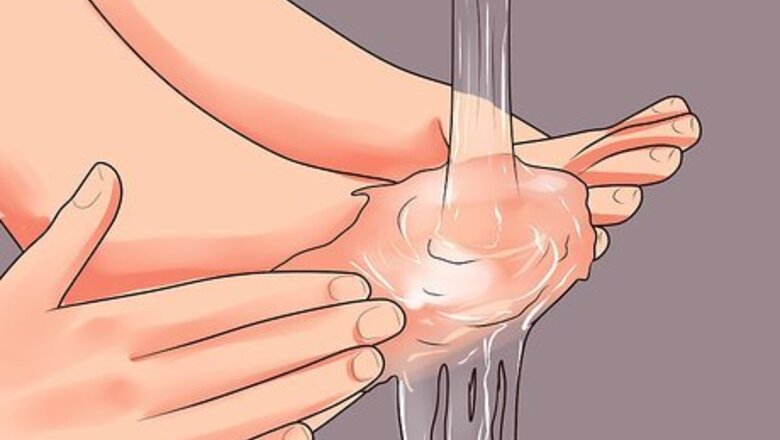
views
Prepping the Area
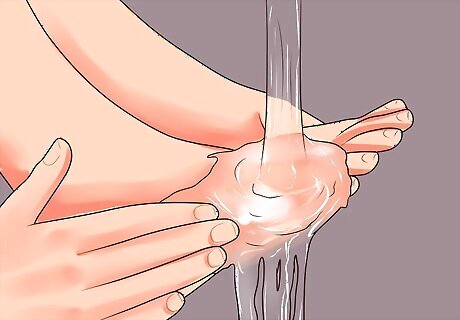
Cleanse with soap and water. Before trying any type of removal, it's important to cleanse the area where the thorn entered your skin. Use a gentle soap and wash the area with warm water before you begin the removal process. Don’t scrub the area, or you could push it in deeper. Pat the area dry with a clean cloth.
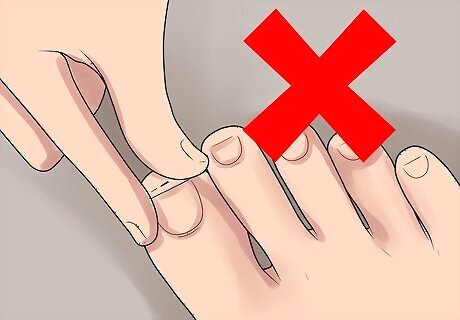
Do not try to squeeze it out. It might be tempted to push and prod the area around the thorn to get it to come out. However, you may end up pushing it in further or breaking it into pieces, leaving you with a more difficult problem on your hands. Leave it alone and try better methods for getting it out.
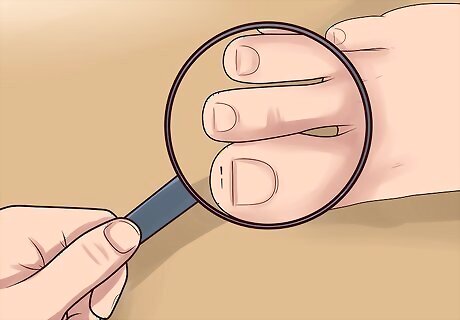
Inspect it closely. Check out the angle and depth of the thorn to figure out how to remove it. Different methods are better for removing thorns at different angles and depths. See how close it is to the surface and whether a layer of skin has grown over it. You may need to use a magnifying glass for a closer look. If the end is poking out, you might be able to remove it with tweezers or tape. If it’s deeply embedded, drawing it out will be required. If it's covered by new skin, you may need to use a small needle or razor, which will need to be sterilized first.

Know when to see a doctor. If the thorn has been in your skin for a few days and you see signs of infection, see a doctor to get it removed. It's better not to attempt getting it out yourself since you could further injure yourself. A doctor will be able to safely remove the thorn and dress the wound to cure the infection. If it’s leaking pus or blood, go to the doctor. If it’s itchy, red and swollen, go to the doctor.
Removing Shallow Thorns
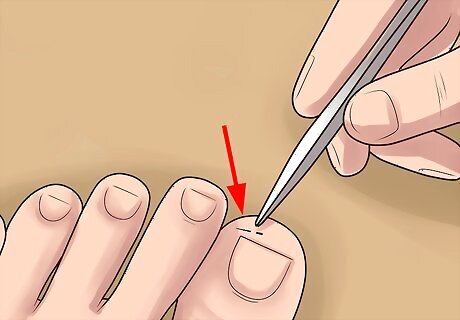
Try tweezers. This is the easiest and quickest method if part of the thorn is sticking out. Make sure you use a clean pair of tweezers. Take tweezers and close the tips around the top of the thorn, then pull it out in the opposite direction of how it slid into your skin. Make sure you know which direction to pull it out. If it's not obvious, you should start with a different method. Don’t dig around with your tweezers if it’s in deep since you could injure the area. Use a different method instead.

Use tape. Another great way to take it out if part of the tip is sticking out is to use a piece of tape. Just place a small piece of tape over the area. Lightly press it over the tip of the thorn, then remove the tape. Don’t push too hard, or you'll press the thorn deeper into your skin. Scotch tape or masking tape is fine, but avoid using tape that could leave a lot of residue and make matters worse.
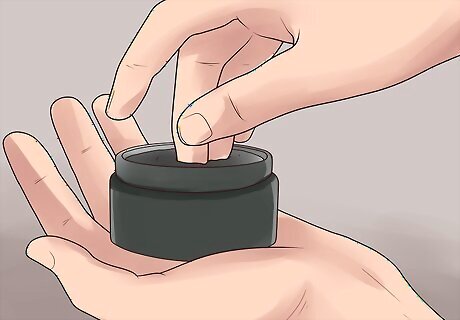
Use a drawing salve. If the tip of the thorn is buried, use a drawing salve to help draw it out enough to expose the tip. When the tip is exposed, you can pull it out with the tweezers. This technique takes a little longer than others, but it works to remove thorns if new skin hasn't yet grown over the entry point. Place ichthammol ointment (also called black drawing salve) on the area, then cover it with a bandaid. You could also use a little epsom salt. Let it work overnight. In the morning, remove the bandaid and rinse it off. Pull out the thorn by its tip with tweezers.
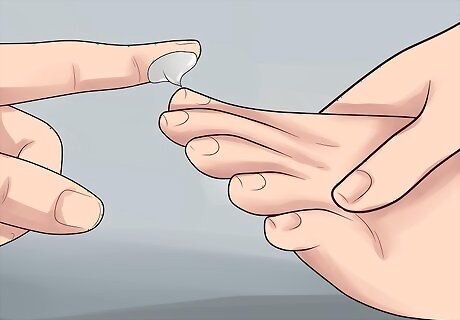
Use baking soda. If you don't have ichthammol ointment on hand, this works, too. Make a thick paste with water and baking soda, and place it over the area with the thorn. Put a band-aid on it and let it work overnight. In the morning, remove the bandaid and rinse. The process will draw out the thorn so you can remove it with tweezers.
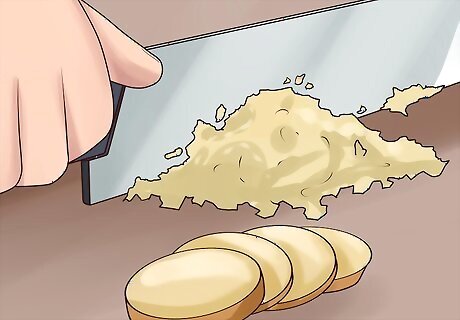
Try a raw potato. The contents of a raw potato work the same way as a drawing salve, causing the thorn to rise to the surface of the skin. Cut fresh, raw potato open and cut a tiny slice. Place it over the affected area and hold it in place with a bandaid. Let it work overnight. In the morning, remove the bandaid and rinse, then pull out the thorn with a tweezer.
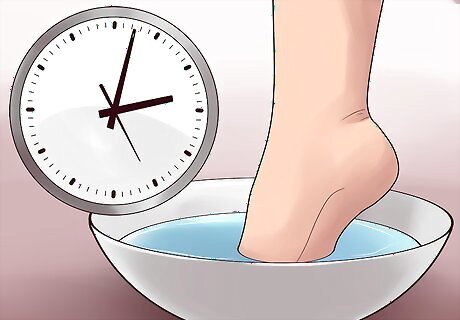
Do a vinegar soak. Place white vinegar in a bowl, and soak the affected area. After 20 minutes or so, the thorn should work its way to the surface and emerge enough for you to pull it out by the tip. This is a good method for fingers or toes that can be submerged in a small bowl.
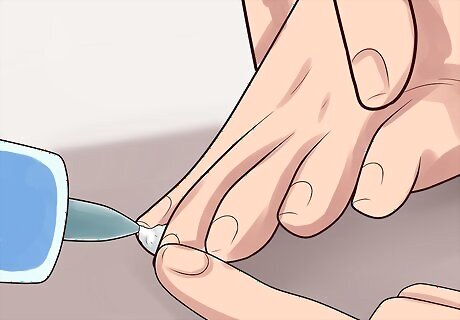
Use white school glue. Put some white school glue over the area and let it dry. As the glue dries, it will draw the moisture from your finger, causing the thorn to move toward the surface. When you remove the dry glue, the thorn will slide right out. Don’t use any other type of glue. Super glue and other heavy-duty glues could make it more difficult to remove the thorn. This works best when the thorn is already close to the surface.
Removing Deeper Thorns
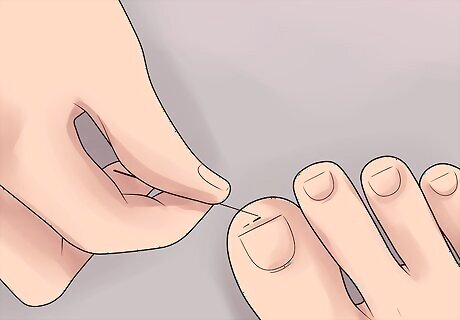
Use a needle to poke it out. If the thorn is just beneath a soft, thin layer of skin that has begun to heal over it, this method works well. However, it's important to follow the right technique so that you don't introduce bacteria to your skin and end up with an infection. Here's how to do it: Make sure the area where the thorn went in is clean and dry. Sterilize a sewing needle by wiping it with rubbing alcohol. Press the tip of the needle over the tip of the thorn and gently loosen the new layer of skin that grew there by digging the needle under the skin. Loosen the skin around the thorn. When enough of the thorn is exposed, remove it with tweezers Clean the area with warm, soapy water. Put a bandaid on if necessary.
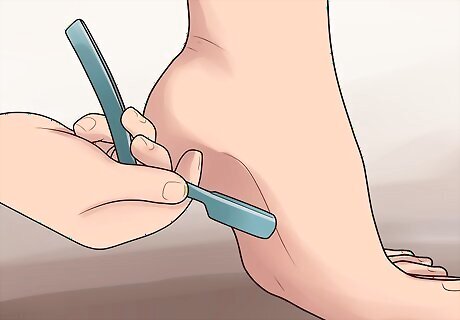
Use a nail clipper or razor blade for thorns in thick skin. Thorns deeply embedded in thick, calloused skin can be removed with a razor. Only use this method for thick skin on your heels or another calloused area. Do not use this method on thinner skin, since you could easily cut yourself too deeply. If you wish to use this method, exercise extreme caution while handling the razor. Make sure the area where the thorn went in is clean and dry. Sterilize the nail clipper or razor by wiping it with rubbing alcohol. Very carefully make a cut over the thorn to expose it. In calloused skin, this should not draw any blood. Use the tweezers to remove the exposed thorn. Clean the area and bandage it if necessary.

Go to the doctor. If the thorn is just too deep to remove on your own, or if it's close to a sensitive area like your eye, see a doctor for quick and clean removal. The doctor will have the right equipment to remove it easily with low risk of infection.


















Comments
0 comment